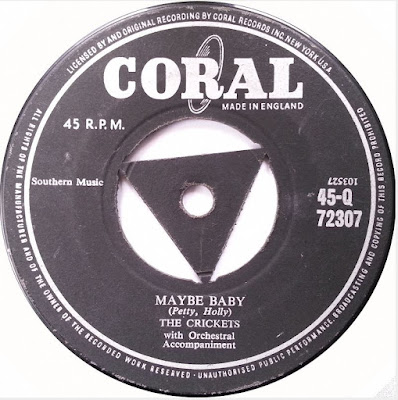LIFE AND DEATH OF A PIRATE by S.K. Moore.
Review by Pete Clemons
A few years ago Susan.K.Moore wrote the first part of her trilogy titled ‘Life and Death of a Pirate’. The pirate in question was her father, Reg Calvert, an enterprising and determined entrepreneur.
But Reg was so much more. He was also a visionary who quickly saw the potential, for growth in the UK, of a fledgling rock and roll music scene that was just beginning to take America by storm during the mid-1950s. And this was an opportunity not to be missed as, to Reg, life was just one big adventure.
Well now Susan has completed her trilogy and books two and three are being made available in a limited hard back edition. Which, in my opinion, is being sold for a bargain price, considering how much many other hardback books can cost. This particular format has had a 1200 copy run with no plans to ever re-release it. Although it is hoped to one day split the story into two paperback editions.
To recap: Part one, 1946-1960, still available as a paperback or download for kindle, tells the story from just after world war two when Reg meets his wife to be, Dorothy. After marrying they make their way to Southampton where they would live in an old bus for several years. It was while in Southampton that Reg first heard ‘Rock around the clock’ by Bill Haley and the Comets which, to him, must have been a eureka type moment. Soon afterwards, he was organising dances in the south of England. These became so popular that promotions, by Reg, very quickly began to spring up in many other areas of the country. After years of struggle, Reg now found himself in demand.
The second part of the story, 1961-63. This part actually forms the first half of the new book and covers the period when Reg and his family move up to Clifton Hall in Rugby. Clifton Hall was where the school of rock ‘n’ roll is born. Not only was Reg still promoting dances but from Clifton Hall, he began to create a whole host of ‘pop stars’. And it was from this base that Reg sent his hit makers such as Danny Storm, Roy Young, Roger James, Glen Dale, Robbie Hood and many others off on tour to a host of venues such as the Co-op Hall in Nuneaton.
The third and final part of the trilogy documents form 1964 when Shivering Sands, a pirate radio station created by Screaming Lord Sutch was taken to another level by Reg. Expanding Reg’s enterprise, Shivering Sands became a defining moment in the history of off shore radio broadcasting as it would eventually cost Reg his life during 1966. It also became a catalyst for change in the whole industry. The book continues with the aftermath and how the family coped with their loss.
Writing a book with such detail as this, and laying out your parent’s life for all to see, could not have been an easy task. The difficulties are clearly obvious. I think they call it a labour of love. I do know that it took many hours of hard work and a great deal of sacrifice was given in order to create it all. This hardback special contains 474 pages and over 170 photographs.
This trilogy really is a fascinating and absorbing read. It’s an incredible story that’s never been fully told before. It is not just the story of a music promotor; it has many other facets besides such as love, intrigue, murder, collusion and so much more. The highs and lows will hold your attention throughout.
BOOK ONE: POPCORN TO ROCK ‘N’ ROLL (the early days)
BOOK TWO: CLIFTON HALL –School of Rock ‘n’ Roll
BOOK THREE: SHIVERING SANDS – 1960s Pirate Radio
For details of bookshops and suppliers from Fillongley Publications:
email fillongleypub@btinternet.com
Or purchase online from www.amazon.co.uk and www.radiocaroline.co.uk
More on Reg Calvert from Pete Clemons, from one of his earlier articles for the Coventry Telegraph - http://coventrygigs.blogspot.co.uk/2012/04/reg-calvert-and-johnny-washington.html







